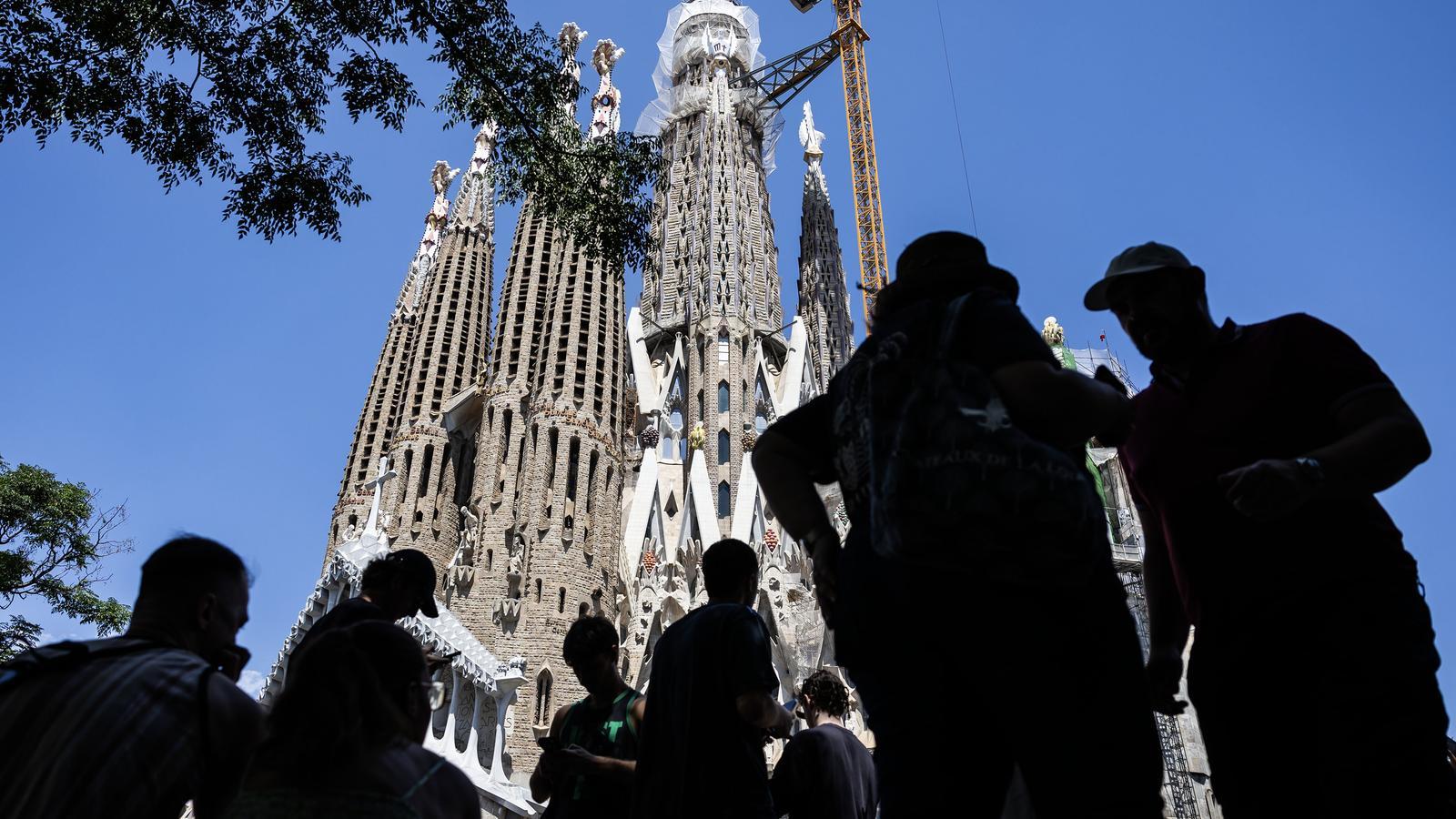The hell of living in Sagrada Família: "They've turned the neighborhood into an attraction."
Every day, 55,000 people visit the Barcelona neighborhood, and many residents complain that their daily lives have been overwhelmed by tourism.

BarcelonaStores of souvenirs where Messi, Lamine Yamal, and Pablo Escobar jerseys coexist in perfect harmony alongside flamenco dresses, Osborne Bull underwear, and star-studded motifs mixed with Spanish flags. Small shops that promise to be open 24 hours a day, and restaurants serving paella and sangria as their signature dishes, have gradually displaced butcher shops, fruit and vegetable stores, and leather goods stores. Of the traditional neighborhood shops, only the signs remain, now bearing witness to a square kilometer overflowing with tourism: the Sagrada Família neighborhood.
The streets that saw the birth of Gaudí's pharaonic work today receive more than 55,000 tourists a day, or half of the visitors that St. Peter's Basilica in the Vatican receives each year, but concentrated in a third of its space. Year after year, the numbers break records, and, according to Ana, a fabric store clerk, "this is destroying the neighborhood." "There are fewer and fewer residents, and there are no more children. It's sad," she laments. Andreu, a lifelong resident, also complains, stating that today "90% of the shops on Marina Street between Aragó and Mallorca Street sell textiles." souvenirs, they are super 24 hours or restaurants for tourists."
The Sagrada Família Foundation, responsible for the monument, raised €134 million last year thanks to the more than 4.8 million visitors who passed through the doors of the monumental church. They complain that this agreement is not translating into noticeable improvements in the neighborhood's daily life.
"They park wherever they want"
Andreu compares the tourist influx to his home with that of the "Montjuïc Olympic stadium spread across just four islands." He complains, however, that the neighborhood has not received improvements commensurate with this overwhelming success and the increase in visitors, with infrastructure that "hasn't been updated for half a century," such as the entrances and platforms to the metro station on line 5. "They've turned Sagrada Família into a tourist attraction, but there hasn't been one." The effects of tourism are noticeable from early morning to late afternoon. "They get off the metro in the morning and it's chaos," explains Ana.
Residents point out that the problem isn't just the high density of pedestrians, but also the dirt and mobility problems caused by tourist buses, which clog the bus lane on Valencia, Lepant, and Mallorca streets. "Most buses park wherever they want, and with the lack of Urban Police officers, there's no effective control," says Andreu.
Diego, who lives right across from the basilica, complains that the neighborhood is cleaned insufficiently: "You arrive at eight in the morning and it's already covered in filth. With 55,000 people a day, three times as many cleaning services would be needed here as in other areas," he insists. And he still raises another problem that makes life in the Barcelona neighborhood difficult: "It's full of terraces and noise. The coexistence is average, bordering on bad," he acknowledges. In fact, several neighbors say that, since there isn't much security, some bars and restaurants put more tables than allowed on their terraces, which ends up obstructing pedestrian traffic.
Overcrowding isn't limited to the streets or the subway; it has become a structural problem. "You have to weave your way around the tourists, but the worst part is housing: my children have had to leave Barcelona because it's impossible to stay here," laments Ester, also a resident of Sagrada Família. Similarly, Diego emphasizes the increasing number of tourist apartments in the area, many of which "are rented by young people who start drinking and causing a scene."
Despite the discontent, not all residents view the tourist presence negatively. Irene, who lives near the Sagrada Família square, explains: "It doesn't bother me; I like seeing people. I understand that those who live closer are more bothered, but I think the economy is doing well. The shops are growing." A view shared by some tourists: "I think the city is doing its best," says Nicola, a Slovak tourist on her third visit to Barcelona. "I don't feel overwhelmed. I'm grateful to be able to visit such a special city," she says.
